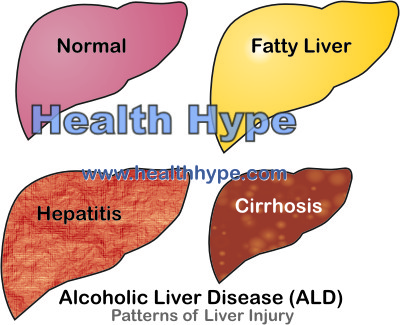Fatty Liver Disease, What is it, Causes and Symptoms
The liver, apart from being versatile, is a highly resilient organ. It is able to withstand a range of chemical insults on a daily basis and one of its core functions is to reduce the toxic effect of various noxious substances. Despite its ability to neutralize chemical agents and regenerate more prolifically than many other organs in the body, it is not entirely immune to various disruptions in structure that may arise for any number of reasons. Some of the changes seen in the liver, as is the case with most other organs includes inflammation, fibrosis and necrosis which causes varying degrees of liver dysfunction. One of the possible structural changes of the liver is infiltration of the liver cells with fat that coalesces into large droplets. This is fatty infiltration is now the leading form of liver disease although most of these cases remain asymptomatic and undetected.
What is fatty liver disease?
Fatty liver disease is an accumulation of fat in the liver cells (hepatocytes). This condition is also known as non-alcoholic fatty liver disease (NAFLD) to clearly differentiate it from alcoholic liver disease (ALD) where similar changes in the liver may be seen. Non-alcoholic fatty liver disease occurs in persons who do not consume alcohol or at least in very small quantities like less than 20grams per week. It is often said to be a disease of the affluent because of its proportion to obesity. Although considered to be the most common form of liver disease, many cases pass through life undetected due to the lack of symptoms. Furthermore, most cases are benign in that it does not cause any complications.
There are two main forms of NAFLD – simple hepatic steatosis (non-alcoholic fatty liver ~ NAFL) or non-alcoholic steatohepatitis (NASH). The former indicates fatty liver without inflammation while the latter denotes inflammation of the liver (hepatitis) with fatty infiltration. A third form that lies between these two states is steatosis accompanied by minor non-specific inflammation. Simple hepatic steatosis is largely benign but NASH is associated with severe chronic liver disease like liver cirrhosis and liver cancer (hepatocellular carcinoma).
Pathophysiology of NAFLD
Accumulation of fat (steatosis) is seen in more than 5% of liver cells (hepatocytes). It may exist in the form of small fat droplets (microvascular) or large droplets (macrovascular). Most of the fats are triglycerides. Although these structural changes of the liver cells do not lead to inflammation or death of the cells, the liver enzymes are raised. With the more benign simple steatosis, this is the total extent of the disease. However with NASH, enlargement of the liver cells progresses until there is cell death and eventually fibrosis. The exact cause for this is not clear.
The current model, referred to as the “two hit” model, provides a working model for the mechanism of tissue injury. First the fat accumulates in the cells possibly as a result of insulin resistance but the blood glucose levels may be normal. Second there is oxidative stress associated with the fat accumulation which causes cell injury. Leptin is a hormone that is released by fat cells and signals the brain when to motivate a person to eat more or less by triggering hunger or suppressing it. This fibrogenic hormone is believed to be the cause of the hepatic fibrosis seen in NASH.
Causes of NAFLD
The exact cause of fatty liver disease is unclear. It is known to be associated with obesity but the reason why some obese people will develop NAFLD and others will not lie in its association with concomitant risk factors. Metabolic syndrome which is a combination of the following conditions appears to be the most likely risk factor for NAFLD :
- Diabetes mellitus
- Hypertension
- Hyperlipidemia
- Elevated body mass index (BMI >25) especially with abdominal obesity
Metabolic syndrome is known to indicate a high risk of having a heart attack (myocardial infarction) or stroke. However, it is also believed that fatty liver disease is the main liver complication associated with metabolic syndrome.
Other risk factors may include :
- Drugs and substances like tamoxifen, amiodarone, methotrexate, alcohol and exposure to certain petrochemicals.
- Weight loss surgery like gastric and/or jejunal bypass.
- Malnutition, starvation or strict dieting and excessive fasting.
- Malabsorption syndromes associated with gastrointestinal diseases
- Metabolic disorders like galactosemia and homocystinuria.
- Wilson’s disease
Signs and Symptoms of NAFLD
Most cases of simple steatosis causes no signs and symptoms. A person lives with the condition for life and is often unaware of its existence. Routine blood tests in an otherwise healthy person may reveal the elevation of liver enzymes. However, NASH may present with a host of clinical features indicative of hepatitis. Eventually the signs and symptoms of complications like cirrhosis may become evident.
Patients with NAFLD despite being asymptomatic for most of the time, may experience prolonged episodes of fatigue, right upper abdominal pain (liver pain) and significant weight changes. This, however, is not conclusive for fatty liver disease and further investigation is necessary.





